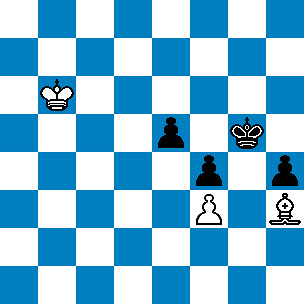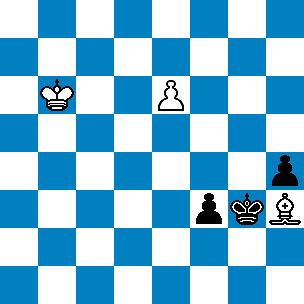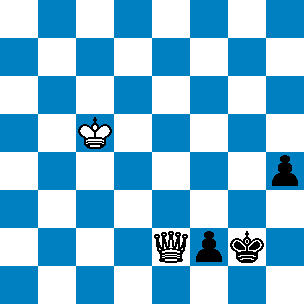In the Rohonyan - Schneider game I think you have overlooked something.
1.h4 gxh4 2.Bf1 Be3 (This is one of your notes) 3.g5 Ke7 4.Kc6 Kf6 5.Kb7 Kg6 6.a7 Bxa7 7.Kxa7 Kxg5 8. Kb6 e5 9.Bh3 (Here you give +-, but I'm not convinced) 9...e4 10.fxe4 f3 11.e5 Kf4 12.e6 Kg3 13.Bf1 h3 14.e7 h215.e8/Q h1/Q At this point, my Chess Engine (with endgame tablebases) is screaming that the position evaluates to 0.00. What do you think? Also, in some of the other variations, it seems to me that Black can put up better resistance by leaving his pawn on e6 to prevent the White Bishop from going to f5 after the White g pawn has advanced. You may want to revisit some of those variations also.
Let's take a look at Tom's analysis. The critical position arises after 9.Bh3:

In my original analysis here, I assumed that this position was lost for black. Let's continue. 9...e4 10.fxe4 f3 11.e5 Kf4 12.e6 Kg3

Here, Tom's line above with 12.Bf1 does lead to a draw. I tried the more obvious 13.e7, but this too seems to end peacefully after 13...Kxh3 14.e8Q f2 15.Qe2 Kg2 16.Kc5

Now 16...Kg1! is a draw, i.e. 17.Qg4+ Kh2 18.Qxh4+ Kg2= with the famous bishop-pawn vs. queen endgame. Note that black's other try 16...h3 actually loses to 17.Kd4! h2 18.Ke3 h1Q 19.Qxf2+ Kh3 20.Qf5+ Kh2 21.Qf4+ Kh3 22.Qh6+ Kg2 23. Qg5+ Kf1 (if 23...Kh2, then 24.Kf2) 24.Qf4+ Kg2 (24...Ke1 25.Qf2+ Kd1 26.Qd2#) 25.Qg4+ Kh2 26.Kf2 with mate to follow.
This all looks pretty convincing to me. Simply waiting with a move like 2...Be3 is black's best plan. Now, where can we find an improvement for white!?
Thanks again to Tom for sending in his findings about this complex ending.

No comments:
Post a Comment